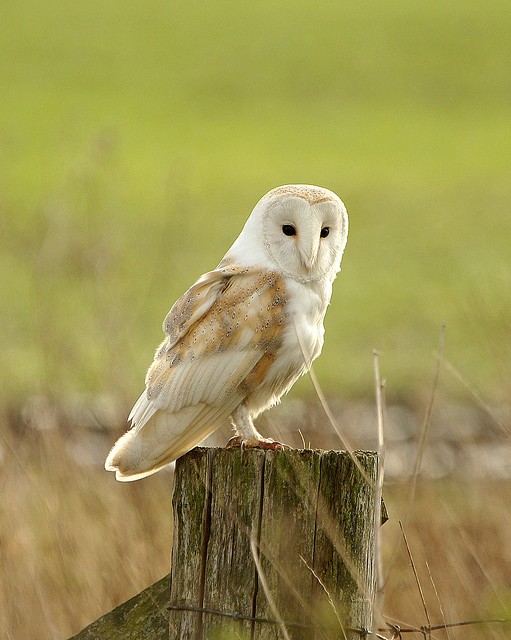Barn Owl
A species of Tyto, Also known as Common Barn-owl, Eastern Barn Owl Scientific name : Tyto alba Genus : Tyto
Barn Owl, A species of Tyto
Also known as:
Common Barn-owl, Eastern Barn Owl
Botanical name: Tyto alba
Genus: Tyto
Content
Description People often ask General Info
 Photo By Phil Haynes , used under CC-BY-SA-2.0 /Cropped and compressed from original
Photo By Phil Haynes , used under CC-BY-SA-2.0 /Cropped and compressed from original Description
Size
32 - 40 cm
Life Expectancy
13 years
Nest Placement
Building
Clutch Size
2 - 18 eggs
Incubation Period
1 - 3 broods
Number of Broods
29 - 34 days
Nestling Period
50 - 55 days
Feeding Habits
Barn Owl primarily consume small nocturnal mammals like rats, mice, voles, and rabbits, avoiding diurnal prey such as squirrels. Their diet occasionally includes birds, bats, lizards, amphibians, and insects, but not earthworms. Nesting barn Owl store prey at nest sites for their young.
Habitat
The barn Owl thrives in diverse open habitats, ranging from temperate to tropical zones. Favored environments include grasslands, deserts, savannas, scrublands, and agricultural regions. These birds adapt to a variety of altitudes, even up to 13,000 feet in the Andes. They are equally at home in urban, suburban, and riparian areas. The barn Owl typically nests in tree hollows, caves, and human structures like barns and abandoned buildings, utilizing varied vegetation types and climates from marshes and bogs to urban forests.
Nest Behavior
Barn Owl's nesting cycle involves minimal construction, as females form the nest. Nests can be used year-round and may be reused annually, sometimes by different individuals. Egg-laying patterns and parental care are not specified.
Nest Characteristics
Barn Owl nests in a variety of locations, from natural settings like tree hollows and cliff crevices to human-made structures such as barn lofts and nest boxes. The nest is rudimentary, often just a cup-shaped depression formed by shredded regurgitated pellets.
Dite type
Carnivorous
People often ask
General Info
Feeding Habits
Bird food type
Bird Feeder Type

Platform
Behavior
Barn Owl exhibit nocturnal habits, gracefully patrolling open landscapes under the guise of dusk or night with deliberate wing movements. Their face functions as a biological sonar dish, pinpointing prey with acute hearing amid darkness. These birds are predominantly monogamous, engaging in aerial courtship displays including the 'moth flight,' where males hover to charm mates, presenting their talons. Prior to egg-laying, males generously provision females, signaling their commitment without territorial aggression over hunting grounds, allowing shared foraging spaces among multiple breeding pairs.
Distribution Area
Its range includes all of Europe (except Fennoscandia and Malta), and most of Africa apart from the Sahara. In continental Europe the distance travelled is greater, commonly somewhere between 50 and 100 kilometres (31 and 62 mi) but exceptionally 1,500 km (932 mi), with ringed birds from the Netherlands ending up in Spain and in Ukraine. Movements in the African continent include 1,000 km (621 mi) from Senegambia to Sierra Leone and up to 579 km (360 mi) within South Africa. 
Species Status
Barn owls are relatively common throughout most of their range and not considered globally threatened. However, locally severe declines from organochlorine (e.g., DDT) poisoning in the mid-20th century and rodenticides in the late 20th century have affected some populations. While barn owls are prolific breeders and able to recover from short-term population decreases, they are not as common in some areas as they used to be. 